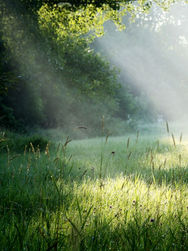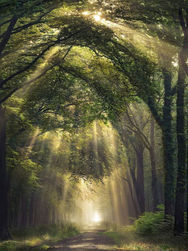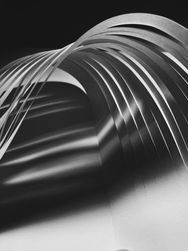Vuletic
Week Seven: Communicating your Design Narrative
Weekly Learning Outcome
-
Present and install the project works in studio space.
-
Develop project management plan.
-
Develop documentation of the designs for the Co-Design workshop.
Formative Review/Feedback:
Small Notes:
- Explore 'light leaks' again, try using the keywords you described the images with to make a scene
- Could I possibly stray from having my proposal be about water aspects? Experiment more with light as it looks like my interest in my development stems from here.
- Interruption, unpredictable, accident, colour, light, whimsical, playful, character, dimension, leaking, nostalgia, discovery, exposure, blur, shadow, grain, layer, hidden, blend.. Play with these ideas more, It seems more intriguing
- Try not to include every detail.. Focus on what really interests you
After my presentation and feedback, I did notice that I had begun to jump from idea to idea and had therefore lost some connection to my initial light ideas. I plan on revisiting this aspect and taking my project down a different route, I feel that straying away from obvious characteristics of the site will benefit me and make my proposal more appealing as I think there are some interesting aspects of Light leaks that I can explore further. I do still like the parametric part of my design which I'd like to take with me as I further develop my design.
Interruption, colour, light, playful, discovery... are some of the main concepts id like to explore further!
James Turrell
Since the 1960s, James Turrell has created an expansive body of work that offers profound revelations about perception and the materiality of light. With their refined formal language and quiet, almost reverential atmospheres, his installations celebrate the optical and emotional effects of luminosity.
Turrell emerged as one of the foremost artists associated with what is known as the Light and Space movement, which began in Southern California in the mid-1960s. Building on his early research into sensory deprivation (particularly the Ganzfeld effect, in which viewers
experience disorienting, unmodulated fields of color), his art encourages a state of reflexive vision that he calls “seeing yourself seeing,” wherein we become aware of the function of our own senses and of light as a tangible substance.
By covering the windows and only allowing prescribed amounts of light from the street outside to come through the openings, Turrell created his first light projections. In Shallow Space Constructions (1968) he used screened partitions, allowing a radiant effusion of concealed light to create an artificially flattened effect within the given space
Further Research on 'Lense Flares'
A lens flare happens when light is scattered or flared in a lens system, often in response to a bright light, producing a sometimes undesirable artifact in the image. This happens through light scattered by the imaging mechanism itself, for example through internal reflection and forward scatter from material imperfections in the lens. Lenses with large numbers of elements such as zooms tend to have more lens flare, as they contain a relatively large number of interfaces at which internal scattering may occur. These mechanisms differ from the focused image generation mechanism, which depends on rays from the refraction of light from the subject itself.
There are two types of flare: visible artifacts and glare across the image. The glare makes the image look "washed out" by reducing contrast and color saturation (adding light to dark image regions, and adding white to saturated regions, reducing their saturation). Visible artifacts, usually in the shape of the aperture made by the iris diaphragm, are formed when light follows a pathway through the lens that contains one or more reflections from the lens surfaces.
Flare is particularly caused by very bright light sources. Most commonly, this occurs when aiming toward the Sun (when the Sun is in frame or the lens is pointed sunward), and is reduced by using a lens hood or other shade. For good-quality optical systems, and for most images (which do not have a bright light shining into the lens), flare is a secondary effect that is widely distributed across the image and thus not visible, although it does reduce contrast.
In Film
Director J. J. Abrams added numerous lens flares to his films Star Trek (2009) and Super 8 (2011) by aiming powerful off-camera light sources at the lens. He explained in an interview about Star Trek: "I wanted a visual system that felt unique. I know there are certain shots where even I watch and think, 'Oh that's ridiculous, that was too many.' But I love the idea that the future was so bright it couldn't be contained in the frame."
A concept that interested me was the fact that 'light flares' in film were historically seen as an imperfection. During production if it was spotted it was cause the set and film crew to have to 'redo' the scene. However, as film styles and techniques developed, a new generation of filmmakers started to emerge, and in the 1960’s directors wanted to move away from the very clean aesthetic that dominated the landscape previously. They wanted vibrance, and authenticity. A ‘realness’ that wasn’t present in films previous. One of the primary methods cinematographers of the time employed to achieve this was lens flare. But what is it about lens flare that is so special, and why does it enchant cinematographers the world over to this day?
"The Perfect Imperfection"
Thinking about my proposed design and where my development is heading... I feel that changing what my space is used for will help put my ideas into a clearer perspective. For instance, rather that trying to change what Imperial lane is currently used for i.e. a passage way to Queen Street or vice versa. I could enhance this experience by creating an exhibit and/or a gallery walking space. I've decided to explore this idea as I feel that I will be able to create parametric forms that will amplify the art/sculptures that would be displayed as well as using an architectural space to enhance the experience through light and shadow. The parametric aspect of my design will correlate to the idea of light rays being imperfect, an interruption etc. Using wavy forms of showing this ideas as opposed to ordinary straight clean lines. I want to be able to use light to not only highlight the art but to also showcase the space that is being used can also be seen as art too.
Formative Feedback
You have made a solid start in terms of your exploration and experimentations throughout the weekly tasks and have demonstrated a clear sense of case studies throughout your blog. Your façade design, however, still leaves room for improvement; your façade design however, what you’ve produced is not exactly what would be labelled as a façade but more so an extrusion onto an existing facade. Though it was clear what you were trying to achieve, the ‘façade’ design needs further developing and rather showcasing natural lightwork onto the existing façade of Imperial Lane, I suggest showcasing them onto the interior of Imperial Lane as the contrast between the darkness of Imperial Lane and the natural light would create a much stronger effect. I would suggest looking into Tadao Ando – as your façade design looks to use heavy materials yet the light shining through the holes becomes the most important part of the project (very similar to how Tadao Ando architecturally works with light).
Natural Light Flares
As I was researching into "light flares" I began thinking about how I could translate this into a installation. How can I display the atmospheric qualities that it creates within film into Imperial Lane? This lead me to thinking about places I have recognised this effect which reminded me of walking beneath trees and having a tranquil experience as I see the light flares shine beneath the trees. Having this memory is going to allow me to explore this further and truly understand the type of "atmosphere" I am to create within my space.
Inspired materiality:
- Light (Immaterial qualities)
- Timber
- Concrete for contrast?
- Nature.. Showing time - Plants growing.
How will this be maintained? Will it be a free growing space? Forest escape? What type of plants will I use? Trees?
Japandi Design Style
Komorebi
There is a Japanese term “Komorebi”, for which no simple English translation exists. Yet it is a distinct phenomenon, that anyone who spends time among trees will have enjoyed. Komorebi roughly translates as “the scattered light that filters through when sunlight shines through trees”. It is made up of three “Kanji” or Chinese characters: “tree” or “trees”, “leaking-through” or “escape”, and “light” or “sun”.
Komorebi is especially noticeable when the sun is low, and mist or smoke can add to the effect. The impact of Komorebi to the observer can range from creating a pleasant ambiance for a walk through the woods, to generating feelings of awe – which in the right place at the right time – verges on the transcendental. As an arboricultural consultant, I spend more time than most looking at trees when undertaking tree surveys for planning, and occasional experiences of Komorebi have caught me unaware, and have momentarily transformed the most uninspiring trees in development sites, into something special.
transcendental experience!!
Reflection:
After researching into ways I could translate light flares into a transcendental experience I stumbled upon a poetic Japanese term called "Komorebi".
I felt that this perfectly translated exactly what I wanted within my installation. I was intrigued by the idea that this is a "phenomenon" that is understood and not easily translated unless by experience. Which has also inspired me to use this as a title for my installation as you have to experience the space to understand the concept of the title.
Where I am heading ....
Experimenting with parametric forms and shadows
I often think better when I am experimenting visually. As Light is a main concept within my installation, I was inspired to use paper to see how I could add light tio the space using parametric design as well as seeing the different shadow forms that were made. How the atmosphere changed due to the harsh or soft shadows. How the parametric shapes could guide a person through the space.
Rhino Modelling







Revisiting my story board:

Utilising the existing sky lights.

Adding raised wooden flooring to embrace the natural wooden textures.

Parametric Design with soft warm lighting, guiding the users to Queen Street.
Co Design Workshop preparation
Project title, Student name
• Project description (what is the design concept of your Centre for Moving Image)
• Curated selection of process work (Cinematic site device, site sequence, surface design, façade design, entrance design, material narratives and event designs).
• Case studies + contextual research (situate your work in relation to the field)
• Detailed storyboard: Six image sequence which describes journey through your proposed design (detailed, fully rendered storyboard).
• Site research and analysis, including site plan where appropriate.
• Floor plans
• Sections
• Elevations
• Detail drawings (axonometric)
Formulating my Abstract
“Komorebi” is a Japanese term for which no simple English translation exists. However, it is a distinct phenomenon that is recognised by anyone who spends time amongst nature. Komorebi roughly translates as “the scattered light that filters through when sunlight shines through trees”. The impact of Komorebi to the observer can range from creating a pleasant sensorial experience, to generating feelings of awe – which in the right place at the right time – verges on a transcendental experience.
Komorebi is an installation situated at Imperial Lane that displays the concept of a cinematic space that embraces biophilia and human connection through light and shadow. Inspired by the use of ‘light flares’ in films by director JJ Abrams I was influenced to generate this idea into a serene experience for the bypasses of Fort Lane.
The significance of this space is to create a transformation of Imperial Lane that embraces cinematic light qualities that are often overlooked by viewers. In doing so I aim to create a sensory space that creates a unique experience for city goers through parametric design and nature. The physical and immaterial qualities I implement into the space will create a concept of tranquility, calmness and embracing of connection allowing users to simply bypass, relax or meditate in the space. Moreover, I want to transform the site that is currently seen as a concrete bypass into a transcendental experience.
















